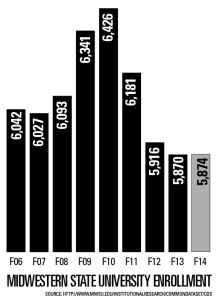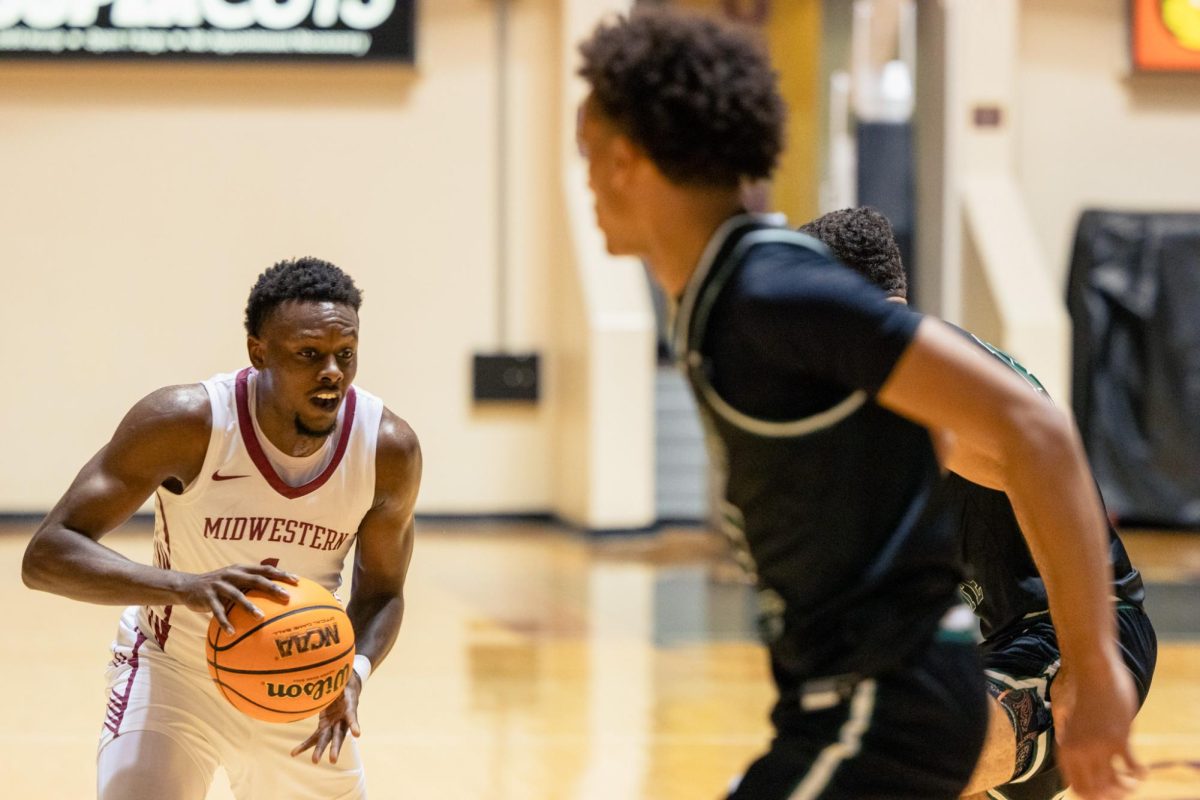Enrollment numbers were made official on the 20th class day and Keith Lamb, vice president of student affairs and enrollment management, said he is hopeful about the university’s enrollment outlook.
“We are up for the first time in many years for students,” Lamb said.
Enrollment, technically speaking, is up from last year, but by only four students. While Lamb said he and other administrators hoped for enrollment to increase by about 100 students rather than four, he said the negligible gains do come with some good news.
“If you’re looking for silver lining, it’s that the decrease in enrollment has essentially stopped at this point. We knew we bottomed out last year, we thought we’d be a little more this year than we were, but again, it was transfers. That’s where we lost headcount. Everything else was right where we expected it to be,” Lamb said.
Lamb said that drop in transfer students—about 70 fewer than last year—is the main reason his goal of reaching 5,975 students was not met.
“I think we’ll start growing now that we’ve retarded the decline. So now we’ll start growing a little bit. With another large class behind this one, then you have three large freshman classes in a row and you start to see the cumulative effect, but we’ve got to get transfers back up,” Lamb said. “That’s the one that’s concerning to me right now.”
Retention sees slight increase
Lamb said the freshman retention rate is up by about five percentage points, with nearly three quarters of 2013 freshmen returning to for their sophomore year.
“I don’t have data yet that tells me, I can only guess. But I think it has to do with last year’s class, fall of ‘13, that retained better, was I think 36 percent from Dallas Fort Worth. It was a residential class,” Lamb said. “Residential classes tend to persist more than commuter classes do. Specifically, students living in residence halls tend to persist more than students who don’t. So we think, it being a residential class, could have had something to do with it.”
But Lamb credits the faculty more than anything for the small jump in retention.
“At the end of the day, the biggest impact on retention is what happens in the classroom, because what happens in the classroom is our faculty are touching students more so than we are. They spend more time with students than any of us do,” Lamb said. “What happens with a student in the classroom impacts the way they feel, look, participate in the institution, more than anything. So obviously our faculty are doing something really good right now in the classrooms.”
From commuter to residential
While overall enrollment is “essentially flat” according to Lamb, the residential population is growing by leaps and bounds, causing a unique problem for cash-strapped administrators.
“A residential campus costs more to run because residents are here all the time. You have to offer more services, you have to offer a lot of things that you don’t with a traditional commuter campus, and so the challenge is, if you’re not growing much in headcount, which we will, but if you’re growing faster in resident than your overall headcount, then your services that you have to offer are disproportionately more than the revenue you’re generating,” Lamb said. These last two classes, these large ones, have been largely residential. The most immediate thing for us to navigate is that. How do we accommodate the demands of a resident student population with no growth in resources?”
While the growth of residential students creates a problem as long as overall enrollment remains flat, Lamb said it does have some immediate benefits for the university.
“The pros with growing residentially much faster than overall growth is that we’re becoming a residential institution. That really kind of goes along with our mission of liberal arts. It gives us more contact with the students, it means we’re first choice more so because residential students see this as a destination,” Lamb said. “It adds an element to campus life that we haven’t had before. Anecdotally, there’s more spirit on campus this year than I can remember in the past.”
Mapping changes
Lamb said administrators began recently using a predictive early alert system call MAP-Works to better track factors that may cause a student to drop out or transfer.
“We’ve only used it one or two years, but it’s a program where beginning students, and now we’ve expanded it to sophomores, are asked to take a survey three weeks to a month into their first year here. And the results of that are paired with pre-college characteristics,” Lamb said. “So if this analytic does its thing and it says, ‘Here’s a student named Ethan who’s at risk for leaving the institution because of financial reasons,’ someone from financial aid will contact you and visit with you. So instead of being reactive, like after you tell us you want to leave, we’re trying to get it on the front end and get solutions.”















